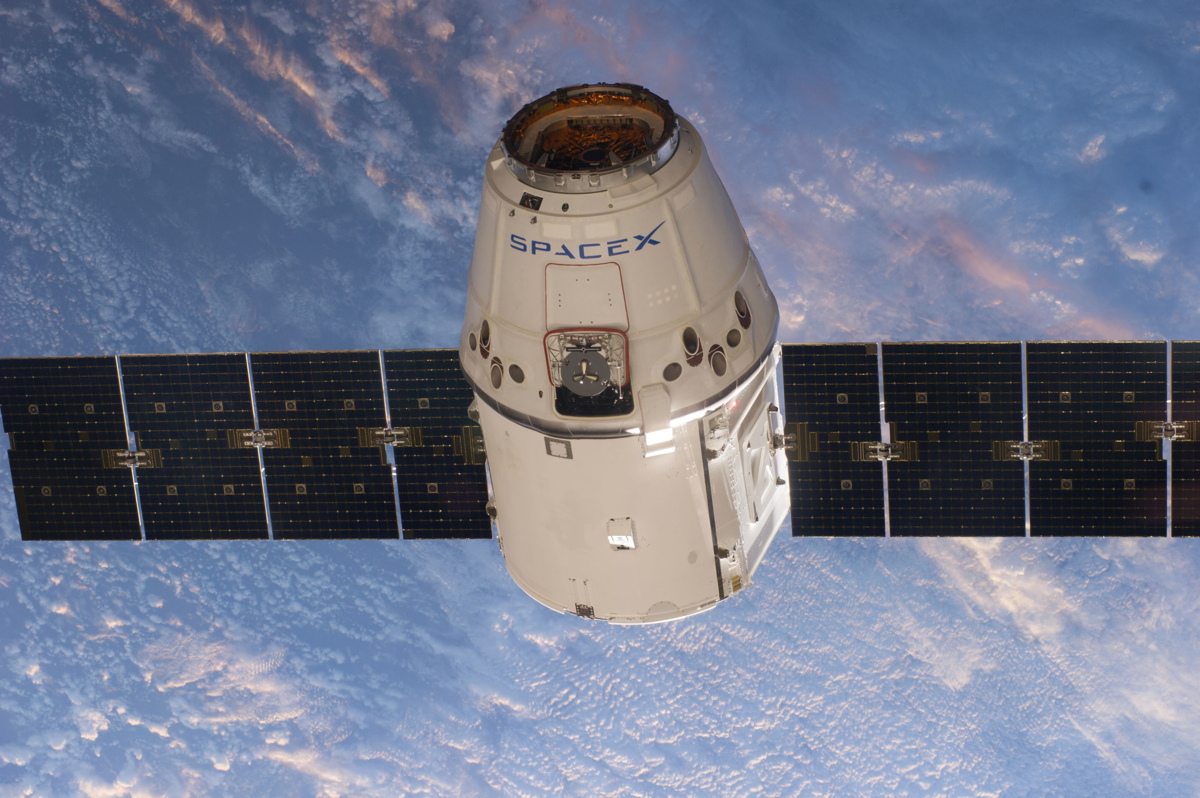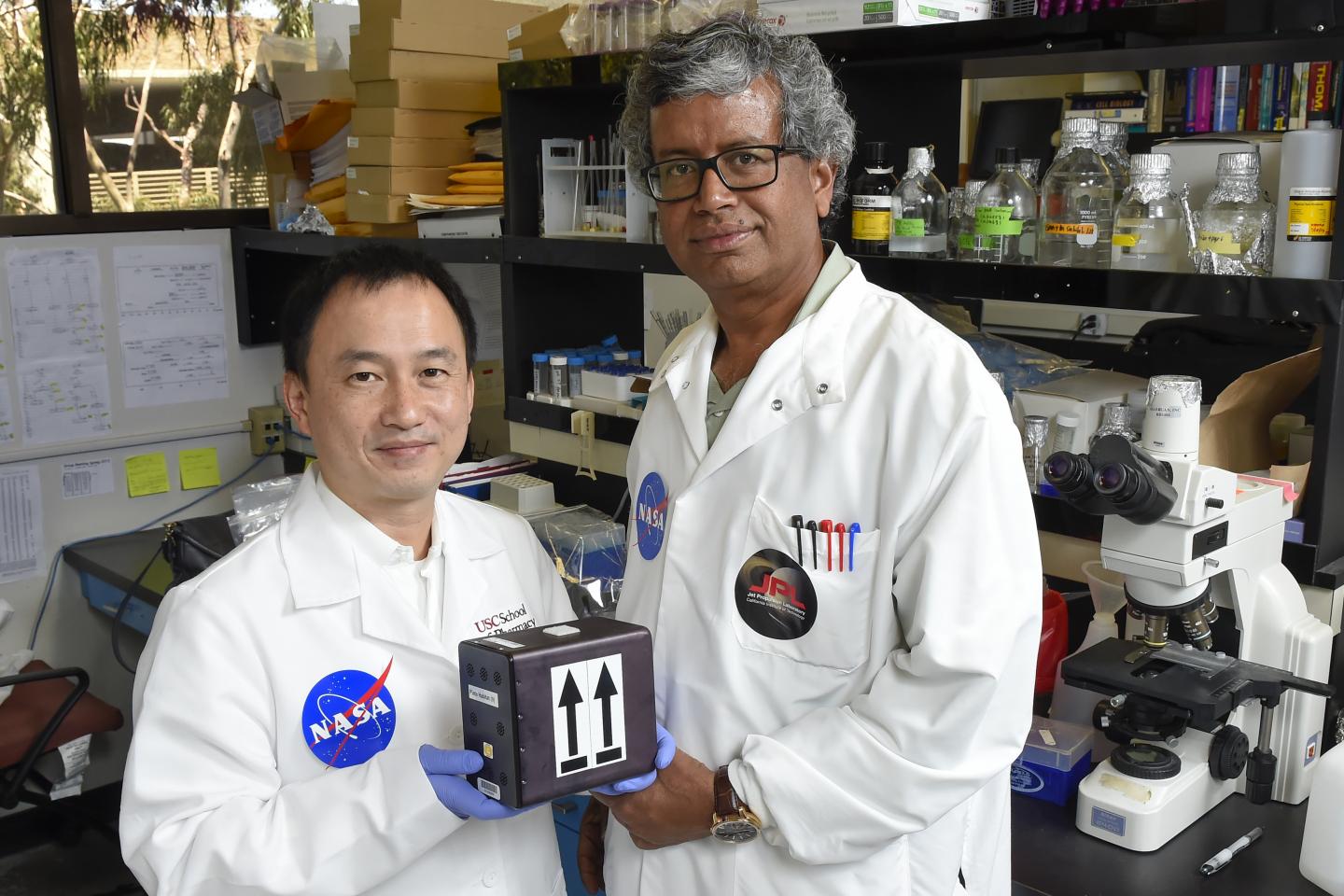SpaceX's Dragon Is Launching a Huge Science Haul to Space Station Friday

SpaceX will attempt to launch a Dragon cargo spacecraft, carrying a bundle of awesome science experiments, toward the International Space Station tomorrow (April 8).
Packed in the Dragon cargo ship, among supplies for the crew, will be a group of fungi that could help scientists develop new medicines, as well as the latest installment in a series of experiments to grow vegetables in space. The cargo also will include live mice that will be part of an experiment that could help scientists develop drugs to prevent muscle degeneration in astronauts or people on Earth. And stashed in the trunk of the spacecraft will be the first expandable space room that will be occupied by humans in orbit.
Friday's launch will be SpaceX's eighth mission to the station, as part of NASA's Commercial Resupply Mission. BEAMing Up: Photos of the Inflatable Space Room on Dragon]

BEAM me up
Bigelow Aerospace, a pioneer in expandable space habitats, will send the Bigelow Expandable Activity Module (BEAM) to the space station aboard the Dragon spacecraft. This will be the first expandable habitat to be occupied by humans in space, although astronauts will not use the habitat regularly. Rather, Bigelow will use this opportunity to further test and monitor its expandable habitat technology. The company has already flown two expandable habitats in space, and has grand plans for future space habitats.
The fungus among us
There are species of fungi here on Earth that have the capacity to produce molecules known as secondary metabolites, which can be used to make pharmaceutical drugs. Some of those secondary metabolites are produced only under stressful conditions, which is why a group of researchers is flying some species of fungi to space. The stressful trip on a rocket, the weightless environment and high radiation may cause the fungi to produce new secondary metabolites that could serve new medical purposes. You can read more about the experiment here on Space.com.

Veggies in space
Future space travelers who voyage to distant locations like the moon or Mars — places where resupply vehicles from Earth may be few and far between — will likely need a means of producing fresh food. That's why NASA has been investing in the Vegetable Production System experiment, also known as Veggie. In August 2015, astronauts on board the International Space Station became the first humans to eat space-grown produce: red romaine lettuce, grown as part of Veggie.
The newest phase of the Veggie experiment (Veg-03) will attempt to grow Tokyo Bekana cabbage.
Get the Space.com Newsletter
Breaking space news, the latest updates on rocket launches, skywatching events and more!
Fresh food will provide space travelers with sustenance and nutrition, and (as opposed to the preserved food astronauts typically eat) may boost their mental health. The opportunity to practice gardening is part of the experiment as well, as it can offer the astronauts a "tool for relaxation and recreation," according to the experiment description.
Biology in space
Three interesting biology experiments will fly aboard the Dragon craft. The Microbial Observatory-1, led by Kasthuri Venkateswaran of NASA's Jet Propulsion Laboratory, will look at changes in microbial flora on the station over time. There appear to be strong links between the health of a person's microbial flora — the unique population of microbes living on or in a person's body — and his or her overall health. The experiment will aim to gain knowledge that could improve crewmembers' health.
High school student Anna-Sophia Boguraev won a competition to send an experiment to the station, and her winning entry could pave the way for many future experiments. Boguraev's experiment will study the effectiveness of a test called the polymerase chain reaction (PCR) — which can make copies of small segments of DNA to be studied — in a weightless environment. The test could be used to investigate the root cause of the negative effects of spaceflight on the human body — in particular, its effects on the immune system.
Finally, pharmaceutical company Eli Lilly and Co. will send 20 live mice to the station to test a novel myostatin inhibitor. Myostatin is a natural regulator of muscle growth, but because muscles degenerate in microgravity, the company would like to try to promote muscle growth by blocking myostatin in the body. Down the road, the results could potentially help people on Earth who suffer from degenerative muscle diseases. Company representatives told Space.com that microgravity is an interesting test environment for this drug because microgravity seems to affect all of the muscles in the body.
Visit Space.comFriday, April 8, to watch SpaceX launch itsFalcon 9 rocket and Dragon cargo ship to the International Space Station. NASA's launch webcast will begin at 3:30 p.m. EDT SpaceX is also expected to land its Falcon 9 booster on a drone ship in the ocean as part of a reusable rocket test.
Follow Calla Cofield .Follow us @Spacedotcom, Facebook @callacofield and Google+. Original article on Space.com.
Join our Space Forums to keep talking space on the latest missions, night sky and more! And if you have a news tip, correction or comment, let us know at: community@space.com.

Calla Cofield joined Space.com's crew in October 2014. She enjoys writing about black holes, exploding stars, ripples in space-time, science in comic books, and all the mysteries of the cosmos. Prior to joining Space.com Calla worked as a freelance writer, with her work appearing in APS News, Symmetry magazine, Scientific American, Nature News, Physics World, and others. From 2010 to 2014 she was a producer for The Physics Central Podcast. Previously, Calla worked at the American Museum of Natural History in New York City (hands down the best office building ever) and SLAC National Accelerator Laboratory in California. Calla studied physics at the University of Massachusetts, Amherst and is originally from Sandy, Utah. In 2018, Calla left Space.com to join NASA's Jet Propulsion Laboratory media team where she oversees astronomy, physics, exoplanets and the Cold Atom Lab mission. She has been underground at three of the largest particle accelerators in the world and would really like to know what the heck dark matter is. Contact Calla via: E-Mail – Twitter









